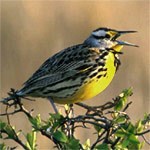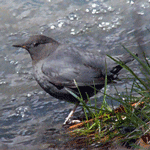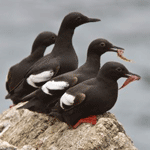Avian Life in Redwood National and State ParksRedwood National and State Parks are home to a remarkable diversity of bird species, with approximately 280 species recorded within the parks’ boundaries—nearly one-third of all bird species found across the United States. This diversity is due to the variety of habitats available within the parks, from coastal areas to forested regions, each supporting a unique range of birdlife. Visitors can explore these habitats and discover dozens of species in a single day, making the parks a prime destination for bird enthusiasts. Below, you’ll find information on common species found in the different redwood habitats, along with resources to aid in bird identification. For more detailed insights, the Klamath Inventory and Monitoring Network provides online newsletters highlighting the bird populations in the area. California Condor Reintroduction EffortsRedwood National Park is exploring efforts to reintroduce the California condor, one of North America's most iconic and endangered birds. This proposed project aims to restore these majestic birds to their historic range within the park, enhancing the biodiversity of the region and providing a unique opportunity for visitors to witness the species in its natural habitat once again. 
NPS Birds of the Coniferous ForestOld-growth and second growth conifer forest, dominated by coastal redwoods, cover the majority of the parks' area. A variety of flycatchers, warblers, swifts, thrushes, jays, woodpeckers, ruffed grouse, and owls can be found here. If you are in the parks in the summertime, before the sun comes up you may even hear or see the elusive, endangered marbled murrelet (Brachyramphus marmoratus). Any of the many forest trails as well as Bald Hills Road, Newton Drury Parkway, Cal Barrel Road, Howland Hill Road, Walker Road and US Highway 199 will take you deep in this habitat type. Learn more about the marbled murrelet

NPS Birds of the Oak Woodlands and PrairiesIn the far southeastern portion of the parks is dominated by extensive Oregon oak woodlands and grasslands. Open country birds and oak specialists are best seen here. Common species include: red-tailed hawk (Buteo jamaicensis), white-tailed kite (Elanus leucurus), acorn wodpecker (Melanerpes formicivorus), california quail (Callipepla californica), western scrub jay (Aphelocoma californica), western bluebird (Sialia mexican), black-throated gray warbler (Setophaga nigrescens) , merlin (Falco columbarius) and western meadowlark (Sturnella neglecta). Access to the area is via the Bald Hills Road and the Dolason and Lyon's Ranch Trails. 
NPS Birds of the Riparian Forest and StreamsWillow, big leaf maple, and red alder dominated forest located along streams including Redwood Creek, Prairie Creek, Mill Creek and the Smith River. Habitat specialists like the American dipper (Cinclus mexicanus), yellow warbler (Setophaga petchia), spotted sandpiper (Actitis macularis) and common merganser (Mergus merganser) as well as habitat generalists like Vaux's swifts (Chaetura vauxi) and common ravens (Corvus corax) are commonly seen along or above streams and riparian areas. The Redwood Creek, Prairie Creek and Mill Creek Trails are all good locations to go to find these birds.

USFWS Birds of Estuaries, Ponds and WetlandsEstuaries, influenced by the tides, can be found at the mouth of Redwood Creek and the Klamath River. Freshwater ponds and coastal lagoons dominated by rushes and sedges are near Crescent and Gold Bluffs Beaches as well as Freshwater Lagoon, Marshall Pond and Lagoon Creek Pond. A wide variety of water birds including diving and dabbling ducks, herons and egrets, coots, bald eagles (Haliaeetus leucocephalus), osprey (Pandion haliaeus), peregrine falcons (Falco peregrinus) and belted kingfisher (Meaceryle alcyon) are found in or near ponds and wetlands. U.S. Highway 101, Endert's Beach Road, and the Coastal Trail (Carruther's Cove and Flint Ridge sections) provide access to these areas.

NPS Beaches, Shore BirdsApproximately half of the parks' coastline is sandy beach, including Freshwater Spit, False Klamath Cove, Gold Bluffs Beach, Klamath Spit and Crescent Beach. A variety of sandpipers commonly stop over during migration or over winter on park beaches including whimbrels (Numenius phaeopus), sanderlings (Calidris alba), western sandpipers (Calidris mauri) and if you are lucky, threatened western snowy plovers (Charadrius nivosus). Depending on the time of year, three or more species of gulls, caspian terns (Hydroprogne caspia) and California brown pelicans (Pelicanus occidentalis) can be seen loafing on beaches as well. US Highway 101, Endert's Beach Road, Davison Road, and the Coastal Trail are all great ways to get to the beach.

NPS Coastal Cliffs, Seamounts and Open Ocean BirdsHalf of the parks' coastline is made up of tall, rugged cliffs and rocky seamounts (islets). Tens of thousands of common murres (Uria aalge), three species of cormorant, and pigeon guillemots (Cepphus columba) nest within Redwood National and State Parks on cliffs and seamounts. Using good binoculars or a spotting scope, it is also possible to see thousands of scoters (sea ducks), grebes, andloons floating in large groups on the ocean. US Highway 101, Endert's Beach Road, False Klamath Cove, Davison Road, Requa Road, and the Damnation Creek and Coastal Trails are all take you to vantage points to view the ocean.
Bird Checklist DownloadLooking to enhance your birdwatching experience at Redwood National and State Parks? Download our comprehensive bird checklist (PDF) to help identify and track the diverse species you may encounter during your visit. This handy guide is perfect for exploring the parks' varied habitats and spotting everything from common species to rare sightings. |
Last updated: October 20, 2024
